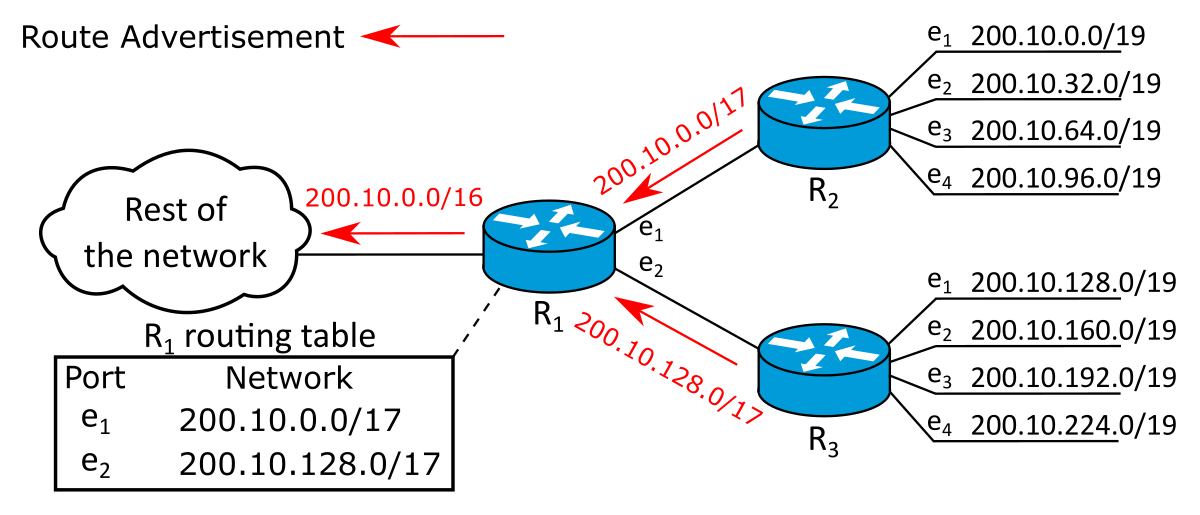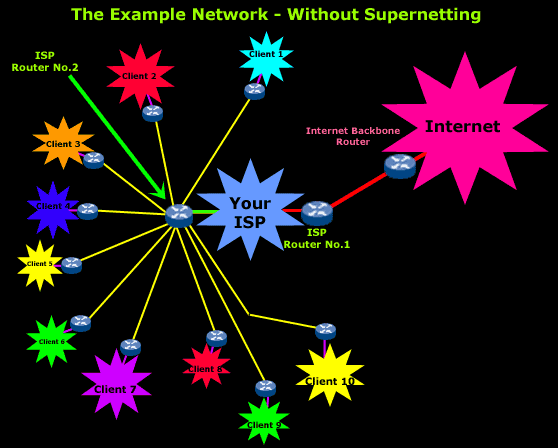Supernet—a cutting-edge network infrastructure that promises to redefine the boundaries of connectivity. In this article, we will delve into the world of Supernet, exploring its definition, functionality, and the impact it may have on various industries. By the end, you will have a comprehensive understanding of this groundbreaking innovation that is poised to shape the future of the digital landscape.

Understanding the Supernet

The Supernet, short for “Super Network,” is a revolutionary concept that aims to redefine connectivity by integrating multiple networks into a unified infrastructure. Unlike traditional networks that operate independently, the Supernet consolidates various network technologies, such as the internet, cellular networks, satellite systems, and more, to provide seamless communication and universal connectivity.
At its core, the Supernet addresses the limitations and incompatibilities that exist between different network types. It achieves this by utilizing advanced technologies such as software-defined networking (SDN) and network function virtualization (NFV). SDN enables centralized control and management of the entire network, while NFV allows network services to be implemented as software components running on generic hardware.
To facilitate interoperability between diverse networks, the Supernet employs intelligent routers, gateways, and switches that can translate and route data between different network protocols. These devices act as intermediaries, bridging the gaps between incompatible systems and ensuring the smooth flow of data packets across the Supernet.
Furthermore, the Supernet leverages innovative techniques like software-defined wide-area networking (SD-WAN) and network slicing. SD-WAN optimizes network performance by dynamically routing traffic based on real-time conditions, such as bandwidth availability and latency. Network slicing allows the creation of virtual network segments, customized to meet the specific requirements of different applications or services, enabling efficient resource allocation and prioritization within the Supernet.
By integrating multiple networks, the Supernet offers several benefits and implications across various sectors. In the business realm, it simplifies network management, reduces costs, and enhances productivity by providing a unified platform for seamless connectivity. This consolidation also fosters the development of innovative applications and services that can leverage the Supernet infrastructure.
For the telecommunications industry, the Supernet presents opportunities to enhance connectivity options. Telecom operators can leverage multiple technologies simultaneously, combining cellular networks with satellite systems, for example, to provide coverage in remote areas. This not only improves connectivity for end-users but also enhances network resilience and reliability.
In the context of the Internet of Things (IoT), the Supernet plays a crucial role. It seamlessly connects various IoT devices and platforms, enabling efficient data exchange and fostering a more interconnected and intelligent environment. This facilitates advancements in smart cities, autonomous vehicles, industrial automation, and other IoT-driven applications.
Furthermore, the Supernet has implications for cybersecurity. By unifying networks, it streamlines security management and enables the implementation of robust security measures across the entire infrastructure. This helps in combating cyber threats and enhances the resilience of the Supernet.
Supernet represents a paradigm shift in network connectivity. It transcends the boundaries of traditional networks, integrating diverse technologies into a unified infrastructure. With its potential to simplify connectivity, enhance productivity, and enable innovative applications, the Supernet holds the promise of reshaping the digital landscape and shaping the future of connectivity for years to come.
How Does the Supernet Work?

The Supernet works by integrating multiple network technologies and leveraging advanced networking techniques to create a unified and seamless infrastructure. Here is a more detailed explanation of how the Supernet operates:
- Integration of Networks: The SN brings together various networks, including the internet, cellular networks, satellite systems, and more. It aims to overcome the limitations and incompatibilities that exist between different network types, allowing them to work together harmoniously.
- Software-Defined Networking (SDN): SDN is a key technology used in the SN. It enables centralized control and management of the entire network infrastructure. With SDN, the network control plane is separated from the data plane, allowing administrators to dynamically configure and manage the network through software controllers. This centralized control simplifies network management and enables efficient utilization of network resources.
- Network Function Virtualization (NFV): NFV is another crucial element of the SN. It involves virtualizing network functions, such as routers, firewalls, and load balancers, and running them as software components on generic hardware. By decoupling network functions from specialized hardware appliances, NFV enables greater flexibility, scalability, and cost-efficiency in deploying and managing network services within the Supernet.
- Intelligent Routers, Gateways, and Switches: The SN utilizes intelligent networking devices to facilitate communication and interoperability between different network protocols. These devices act as intermediaries, translating data packets from one protocol to another and routing them efficiently across the Supernet. They ensure that data flows seamlessly between the various integrated networks.
- Software-Defined Wide-Area Networking (SD-WAN): SD-WAN is a technology used in the SN to optimize network performance. It dynamically routes traffic based on real-time conditions such as bandwidth availability, latency, and network congestion. SD-WAN intelligently selects the most suitable path for data transmission, ensuring optimal performance and reliability across the Supernet.
- Network Slicing: Network slicing is another technique employed by the SN. It involves creating virtual network segments within the infrastructure to cater to the specific requirements of different applications or services. Network slicing allows resources to be allocated and prioritized based on the needs of each slice, ensuring efficient utilization of network capacity and enabling tailored services within the SN.
By combining these technologies and techniques, the SN creates a unified network infrastructure that seamlessly connects diverse networks. It enables data to flow efficiently between different network protocols, provides centralized control and management, optimizes network performance, and allows for the customization of services based on specific application needs.
The Supernet’s ability to integrate and leverage multiple networks empowers users with universal connectivity and opens up new possibilities for innovative applications and services. It simplifies network management, enhances productivity, and offers improved connectivity options, ultimately shaping the future of network connectivity.
The Implications and Benefits of the Supernet
The emergence of the Supernet brings forth numerous implications and benefits across various sectors and industries. Let’s explore some of the key advantages and potential impacts of the Supernet:
- Simplified Connectivity: The SN addresses network fragmentation by providing a unified platform for seamless connectivity. This has significant implications for businesses, as it simplifies network management, reduces costs, and enhances productivity. With the Supernet, organizations can seamlessly connect and communicate across different networks, eliminating the need for complex and cumbersome integrations.
- Enhanced Network Performance: By leveraging advanced technologies such as SD-WAN, the Supernet optimizes network performance. SD-WAN dynamically routes traffic based on real-time conditions, ensuring efficient utilization of available bandwidth and reducing latency. This leads to improved network speeds, enhanced user experiences, and better overall performance.
- Improved Connectivity Options: The SN enables telecom operators to offer enhanced connectivity options by combining multiple technologies. For example, cellular networks can be integrated with satellite systems to provide coverage in remote areas. This expands connectivity opportunities for end-users, bridging the digital divide and ensuring reliable communication in previously underserved regions.
- IoT Advancements: In the Internet of Things (IoT) ecosystem, the SN plays a vital role in enabling seamless connectivity between various devices and platforms. By integrating IoT networks into a unified infrastructure, the Supernet facilitates efficient data exchange, fostering a more interconnected and intelligent environment. This opens up opportunities for advancements in smart cities, autonomous vehicles, industrial automation, and other IoT-driven applications.
- Security and Resilience: The SN has implications for cybersecurity and network resilience. By unifying networks, it streamlines security management and enables the implementation of robust security measures across the entire infrastructure. This helps in combating cyber threats and enhances the overall resilience of the Supernet. Centralized control and management through SDN also facilitate efficient monitoring and rapid response to potential security breaches.
- Innovation and New Services: The Supernet’s ability to integrate diverse networks creates opportunities for the development of innovative applications and services. With a unified infrastructure, developers can leverage the Supernet’s capabilities to create novel services that span across different networks and platforms. This fosters innovation and expands the possibilities of what can be achieved within the digital landscape.
- Collaboration and Interoperability: The SN promotes collaboration and interoperability between different entities. With seamless connectivity, organizations can easily share data, resources, and services across networks, enabling efficient collaborations and partnerships. This enhances business processes, facilitates knowledge sharing, and fosters innovation through cross-industry cooperation.
- Scalability and Flexibility: The Supernet’s utilization of technologies like NFV enables greater scalability and flexibility in deploying network services. By virtualizing network functions, it becomes easier to scale services up or down based on demand, without the need for extensive hardware deployments. This scalability and flexibility allow organizations to adapt and respond to changing business needs more effectively.
Supernet offers a wide range of benefits, including simplified connectivity, enhanced network performance, improved connectivity options, advancements in IoT, increased security, opportunities for innovation, and improved collaboration. As the Supernet continues to evolve and gain traction, its impacts are likely to reshape industries, empower businesses, and enhance the way we connect and communicate in the digital age.
Conclusion
The Supernet represents a significant leap forward in network connectivity, promising to reshape the digital landscape and revolutionize the way we connect and communicate. By integrating multiple networks into a unified infrastructure, the Supernet eliminates the limitations and incompatibilities that exist between different network types, providing seamless connectivity and universal access to information and services.
Through the utilization of advanced technologies such as SDN, NFV, SD-WAN, and network slicing, the Supernet achieves efficient network management, optimized performance, and tailored services. It simplifies network operations, enhances productivity, and offers improved connectivity options, particularly in remote and underserved areas. The Supernet’s ability to seamlessly connect diverse devices and platforms also drives advancements in IoT applications, fostering a more interconnected and intelligent environment.
DISCLAIMER: The Information on this website is provided as general market commentary and does not constitute investment advice. We encourage you to do your own research before investing.



